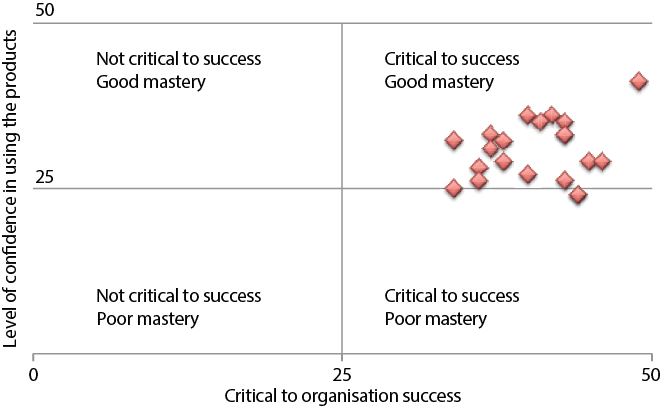An in-depth understanding of ECMWF’s products, in particular of ensemble forecasts, is essential for users to be able to integrate these products into their daily routines. This requirement is the driving force behind the high demand for ECMWF’s course on the ‘Use and Interpretation of ECMWF Products’. ECMWF has responded to this demand in various ways: increasing the number of courses, introducing blended courses (self-learning and face-to-face sessions) and providing webinars on specific topics. This year we have introduced a version of the course ‘Use and Interpretation of ECMWF Products’ targeting trainers and training champions. The idea is to help participants spread knowledge on how to get the most out of ECMWF products, by using their organisations’ own channels of training.
The ‘train the trainer’ version, which took place from 1 to 5 February 2016, included many of the course’s regular topics: there were sessions on data assimilation, forecasting extreme events, and satellite observations. The real novelties were the use of games to teach some basic ensemble forecasting concepts and the analysis of competencies needed to use ensemble forecast products effectively in daily forecasting tasks.

The idea of using games in education and training is not new. The ‘gamification’ of learning is an educational approach to motivate students to learn while using game elements in the learning environment. At ECMWF we have used simple games in courses in the past, and this year we have introduced a new game called ‘How much are you willing to pay for a forecast?’. The game was developed jointly by scientists at ECMWF, IRSTEA (Institut national de recherche en sciences et technologies pour l'environnement et l'agriculture), the Red Cross/Red Crescent Climate Centre and UNESCO-IHE (Institute for Water Education).
Course participant David Jameson is an operational meteorologist at Wattisham Airfield in Suffolk, employed by the UK Met Office. He chiefly uses ECMWF’s medium-range and long-range products to provide forecasts for the armed forces at the Airfield.
“The sessions on training were very useful. They highlighted current gaps in training and ways to address them,” he said. “We also played games, which we may be able to reuse in the training we provide.”
The participants considered that mastering ensemble forecast products and more generally probability forecasts is critical for the success of a weather service. The analysis of gaps in training revealed that we have some more work to do to improve understanding of ensemble products, especially for severe events.
One of the participants, Nataša Strelec Mahović, is the head of the Weather Analysis and Forecast Department in the Meteorological and Hydrological Service of Croatia (DHMZ). In this capacity, she is also in charge of training forecasters.
“The training-related sessions will be useful to provide forecasters with more focussed and more formal training on ensemble products,” Dr Strelec Mahović said. “It emerged that all course participants are aware of the importance of using ensemble products, but there was quite a spread in how good people feel they are at using them.”
The World Meteorological Organization has developed competency frameworks for a number of meteorological areas. The course was a good opportunity to look into the competencies needed to use ensemble forecast products effectively. Working in groups, the participants produced the following list of competencies:
- Discover and select appropriate products depending on the weather event
- Link global scenarios with their associated probabilities to local weather making use of the full ensemble distribution
- Assess flow predictability
- Get to know your end users, create tailored products and communicate effectively
- Provide feedback to NWP data producers
These competencies will serve as feedback for future competency frameworks for forecasters as well as an inspiration for the work done in ECMWF’s Member and Co-operating States. Course participant Igor Kos, a trainer at Croatia Control Ltd (CCL, Croatia’s official provider of aviation meteorological services), presented the competency activity carried out during the course at a Competency Assessment Workshop hosted by his company. The workshop focused on competencies and competency assessment for Aeronautical Meteorological Personnel (AMP). In his presentation, Igor emphasised the importance of group work and how discussions among experts can lead to the production of a relevant list of competencies. The workshop highlighted the importance of defining competencies and how competency frameworks are critical to the success of organisations.


